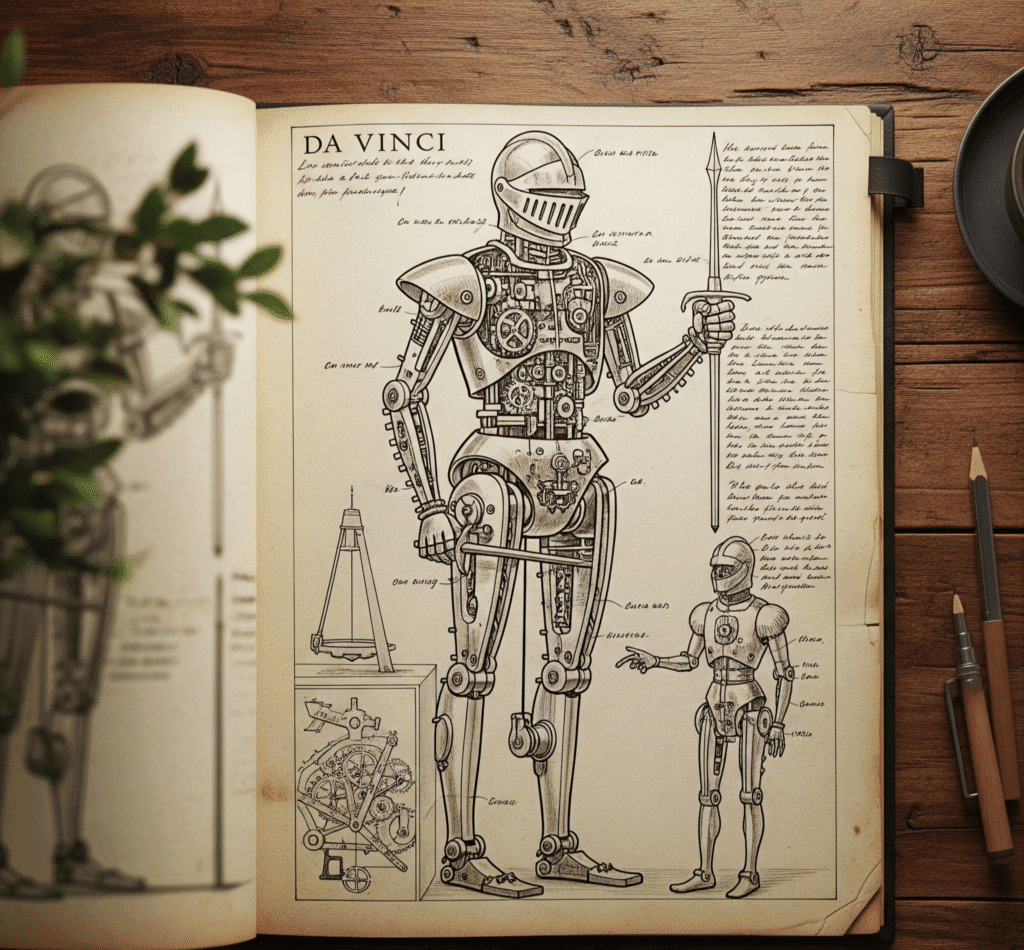Introduction: Before Computers, There Was an Idea 🤔 #
Long before the first microchip was invented, humanity was captivated by a powerful and persistent dream: the creation of an artificial mind. The field we now call Artificial Intelligence didn’t spring from computer labs; its roots run deep into the soil of mythology, philosophy, and mathematics. To truly understand AI today, we must first travel back to a time when these intelligent machines were just a glimmer in the eyes of thinkers and storytellers. This is the story of that foundational dream.

(Image Prompt: An image depicting a page from Leonardo da Vinci’s notebooks showing a mechanical knight, suggesting early concepts of artificial beings.)
The First “Robots”: The Age of Automata ⚙️ #
The earliest explorations of AI weren’t about software; they were about physical, mechanical beings. These were known as automata.
Ancient myths from around the world told tales of intelligent, man-made creations. As technology progressed, these myths slowly began to inspire real-world inventors to build intricate clockwork figures that could write a sentence, play a musical instrument, or mimic the movements of an animal.
These early concepts of automata were the first tangible attempts to replicate the actions of living creatures through engineering. They proved that complex behaviors could be broken down into a series of mechanical steps—a fundamental idea that would one day be essential for programming computers.
Can Thought Be a Formula? The Rise of Formal Logic ➕ #
While engineers were building mechanical bodies, philosophers and mathematicians were tackling an even greater challenge: trying to build a blueprint for a mind. They asked a revolutionary question: Can human reasoning be described by rules, just like math?
This led to the development of formal logic—a system for representing ideas and arguments using symbols and equations. Thinkers like George Boole in the 19th century pioneered the idea that logical statements could be processed in a way similar to arithmetic.
This was a monumental leap. The role of formal logic was to provide a framework suggesting that the process of “thinking” could be systematized and, therefore, potentially replicated by a machine. This laid the intellectual groundwork for all future computer science and AI.
The Big Questions: Philosophy Meets Technology 🧠 #
With the concepts of mechanical bodies (automata) and logical minds (formal logic) beginning to form, thinkers were forced to confront a series of foundational philosophical questions about intelligence. These questions were debated centuries before the first AI was built, and they remain at the heart of AI ethics today:
- The Mind-Body Problem: Is the mind simply the product of the physical brain, or is it something more? If a machine perfectly mimics a brain, does it have a mind?
- The Nature of Intelligence: What does it actually mean to “think” or to “understand”? Is it about processing information, or is consciousness required?
- Authenticity vs. Simulation: If a machine can act intelligent, is it truly intelligent? Or is it just a masterful fake?
These profound questions set the stage for the scientific and technical challenges that were to come, ensuring that the quest for artificial intelligence would be as much a philosophical endeavor as a technological one.
Related Reading 📚 #
- What’s Next?: The Dartmouth Workshop: The Birth of a Field 💡
- Explore a Key Concept: The Quest for AGI: What is Artificial General Intelligence? 🤖
- See the Modern Impact: An Introduction to AI Ethics & Responsible Development ⚖️


